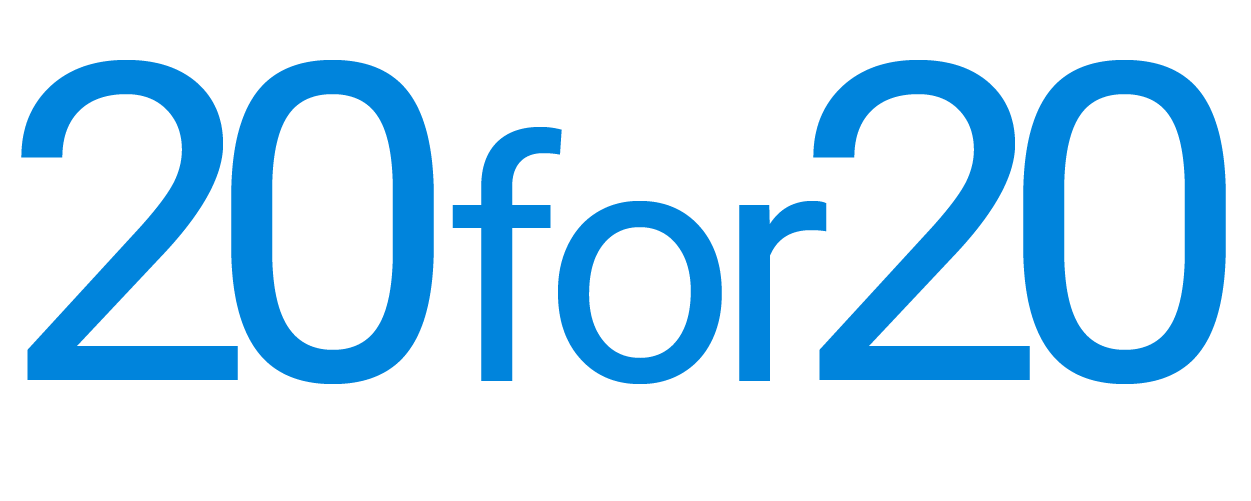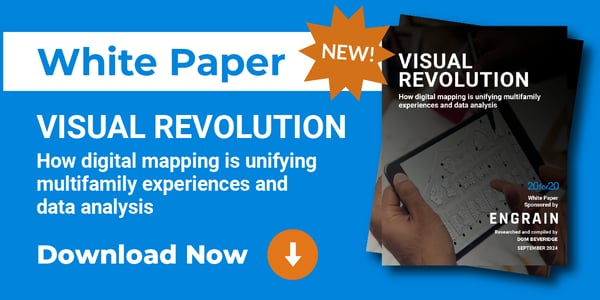
Every once in a while, you come across an idea that's much bigger than you initially realize. About a year ago, I published a paper on how unit-level search is redefining multifamily websites. It's a simple concept: Humans tend to search for things visually, and that increasingly applies to technology experiences: think Uber, travel or restaurant booking sites or apps, and so on. Multifamily assets are physical, so to meet the expectations of prospects and residents, maps need to be central to apartment search.
Since publishing that paper, it has become clear how far visualization goes beyond apartment search. It is increasingly central to renter experiences, property management processes and analysis. After working for several months researching developments with 12 different software providers and users, I am excited to release a new white paper, "Visual Revolution." The paper uses extensive examples from various property management functions to explore changes not only to how technology looks, but to how it works.
Bridging the gaps in the centralized environment
As our industry works to become more centralized, technology must contribute more substantially to delivering experiences and services. That includes providing detailed information to people who may not be as familiar with the community as a property team would be. Leasing is full of examples of how visualization opens up new options for tech-enabled experiences.
Consider processes like wayfinding and self-guided tours. The paper demonstrates how best-in-class technology for self-guided tours relies heavily on interactive mapping, providing a seamless transition from web search to the in-person experience of a property tour. It is curious how testing shows that with wayfinding apps, just as with websites, interactive maps drive higher engagement with the technology.
The same digital representations of the physical property help centralized leasing teams guide prospects through the leasing process. And, of course, the same data can achieve even greater leverage when applied to AI leasing agents.
The example in this paper of a leading AI provider is highly instructive. AI has infinite capacity to answer prospect questions, assuming sufficient training data. Properties have mostly relied on written PMS records of property details, but that is suboptimal, given that so many questions are about the physical details of the community.
Digital agents are already impressive at handling inbound leasing inquiries, but their potential is far greater. The paper's example shows why training AI with detailed digital property maps is better. For example, AI can answer questions like, "How long does it take to walk from this place to that place?" more quickly and accurately than humans relying on written documents.
The rise of spatial analytics
Anyone who has booked a hotel online knows that placing things on a physical map is better than relying on list views. Digital maps are the ultimate guide to physical, location-bound products - they make things easier to understand. The same is true of multifamily: there is a limit to what you can know about a community if you're not looking directly at a picture of where everything is.
The paper contains multiple examples of use cases of companies' visualization of property data to gain new insights. We can understand things like lower-than-average renewals if they happen to be geographically concentrated within a building: sometimes, it just takes a noisy neighbor to disrupt your renewal strategy!
This concept of spatial intelligence is becoming increasingly important, unlocking more sources of value that properties miss when relying on conventional reports and lists. The implications for the technology ecosystem go far beyond simply putting more maps into more applications. Companies are developing new ways of characterizing the real estate they task property managers with managing.
It's redefining how we deliver experiences, how we manage core functions like maintenance, and how we understand what's happening at our properties, including where there are opportunities for improvement. We'll explore this in more depth in a future post. But for now, if you're interested in the progress of technology in multifamily, download the paper and let us know your thoughts.
Photo by Alvaro Reyes on Unsplash



